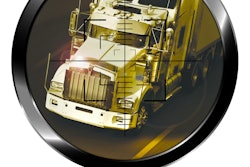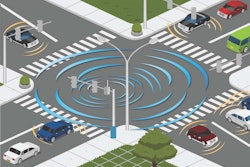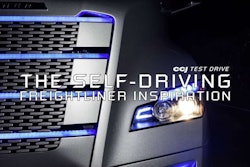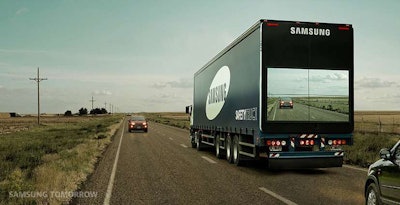
When a big story like a self-driving truck hits, it’s only natural that it dominates the news cycle while overshadowing other developments. A key point is the new “Safety Truck” technology showcased by Samsung this week, which links various onboard vehicle camera systems and turns the back of a semi trailer into a large, heads-up display screen.
The story has appeared in several mainstream news outlets over the past several days. I first ran across it in The Christian Science Monitor. And it’s a pretty amazing piece of technology. The camera systems allow a driver struck behind a big rig to access the same view the truck driver has. The thinking is this will allow following drivers better information as to the road ahead – specifically road hazards, accidents or unsafe drivers. That way, instead of merely reacting when the brake lights in front of you suddenly blink on, drives using the Samsung system will be able to gauge the road out in front of them, better anticipate problems and changing road conditions and react accordingly in a much safer time frame.
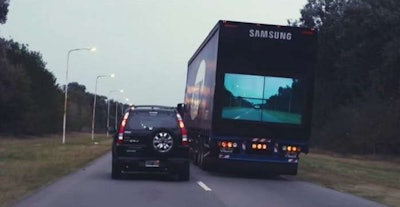
For me, this Samsung development is interesting because it highlights the incredible advantages that connectivity will deliver to trucking in the very near future.
Autonomous trucks and cars can operate in limited roles on our highways today. The technology, while still in its infancy, is already impressive and obviously has the potential to completely transform transportation. But the technology won’t reach its true potential until massive leaps forward in vehicle connectivity occur.
Right now, autonomous vehicle technology is essentially cruise control on steroids. That’s because the scope of a current truck’s operating environment is limited by the amount of information it receives and processes.
Today, if you happen to see an autonomous car or truck going down the road, in most instances, the vehicle is processing both inert and active data from the environment surrounding it. Land detection cameras watch painted lines on the road while additional radar and camera systems access, verify and track moving objects like other cars and stationary objects like guardrails and highway overpasses and then matches that real-time telemetry with bigger-picture GPS data to move the vehicle down the road safely.
But any autonomous vehicles on the road now are essentially operating in a vacuum. As this story from earlier this month noted, Google autonomous cars do just fine on the road – until they have to contend with human drivers in other cars. And then it seems, accidents can still happen.
The true breakthrough will come when every vehicle and object on the road is connected and communicating with in real time. Automatically accessing camera and radar information and sharing it with multiple vehicles is a given, as Samsung is already demonstrating. Soon, all the vehicles on the road will be gathering and sharing information with one another: vehicle speed and braking are givens. Guardrails, bridges and other structures will have transponders in them, acting like thousands of roadside lighthouses flashing electronic warnings toward oncoming vehicles: I AM A HIGHWAY OVERPASS! DO NOT RUN INTO ME!
Traffic lights will work with both the vehicles on the road below and high-tech traffic control computers to keep traffic flowing as efficiently as possible. Smart intersections will compute vehicle telemetry and compare flow rates with other vital roads in a given area to seamlessly expedite traffic flow.
Has the volume of cars doubled? Then perhaps the system will elect to hold traffic lights on the main thoroughfare green for an additional 45 seconds per cycle to let a higher volume of traffic get through and help ease congestion before it turns into a full-blown traffic jam.
Connectivity will be the key to this highly efficient future. Samsung’s new Safety Truck system is taking the first step toward putting connected vehicle technology into real world use and giving us another glimpse at how dramatically the future of transportation is already changing.


